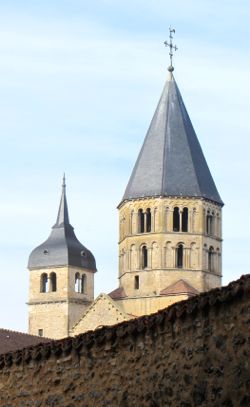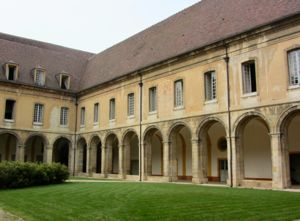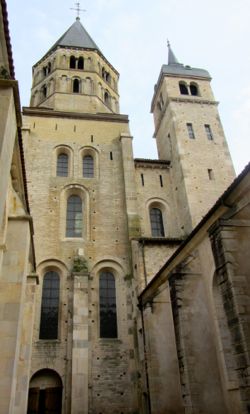 |
Abbey of Cluny, Burgundy, France | |
| One of the oldest and largest monastic orders in Europe. | ||
|
|
|
The Abbey of Cluny dates from the year 910. Once considered the greatest church in Christendom, its influence spread throughout the Middle Ages. It was the center of a large religious movement, serving as mother house for over 1000 monasteries at its peak. Today you will still see many towns that identify as "sites clunesiens." Because much has been destroyed over time, visiting the Abbey requires a good imagination, and the visit is aided by reproductions and use of technology to help visitors appreciate the enormous size of the Abbey. History took its toll on Cluny, from the War of Religion in the 16th century to the French Revolution and the dissolving of monastic orders. Fortunately, in 1821 preservation efforts began, and it was recognized as a historic monument in 1862. The first church on the site, referred to today as Cluny I, lasted only until 981. Cluny II followed it, but it lasted only a century. Cluny III, built between 1088 and 1130 and called the Maior Ecclesia (biggest church) succeeded it. It is largely the remains of Cluny III that are visible today, but models throughout the Abbey show the evolution of the buildings. The great transept and the nave (which form the cross-like structure of the church) give a sense of the incredible height of the structure—30 meters (98 feet) at its tallest point. An "augmented reality terminal" with a mobile screen in the nave allows you to "see" what it must have looked like.
Several small chapels are decorated with sculptures of apostles, prophets, and kings. This one was labeled David. The chapels were used for such things as housing relics or as places for private masses. Other monastic buildings are spread across the vast grounds. The Abbey was enclosed behind fortified walls, and many of the towers are still visible. The colorfully named Cheese Tower provides lovely views of the Abbey, for those who are up for climbing about 120 steps. Over the centuries a small town developed around the Abbey. Its narrow winding streets are fun to explore on foot, and tricky to navigate by car. It's best to park in one of the large lots on the outskirts of town (on Route 980, also called Rue de la Roseraie) and walk in from there. Cluny is 111 kilometers (69 miles) south of Beaune and just 23 kilometers (14 miles) north west of Mâcon. (map) While you're in the area, you might want to visit some of the lovely small clunisien villages such as Taizé and Ameugny, with their 12th century Romanesque churches. The Tourist Information Office in Cluny is located at 6 rue Mercière (map) and can provide information about visiting the Abbey as well as other sights such as the Cheese Tower or the museum in the Jean de Bourbon Palace. There is also a self-guided walking tour of the village.
|
|
Above, Towers of the Abbey of Cluny, France.
Above, That's one tall structure!
|




